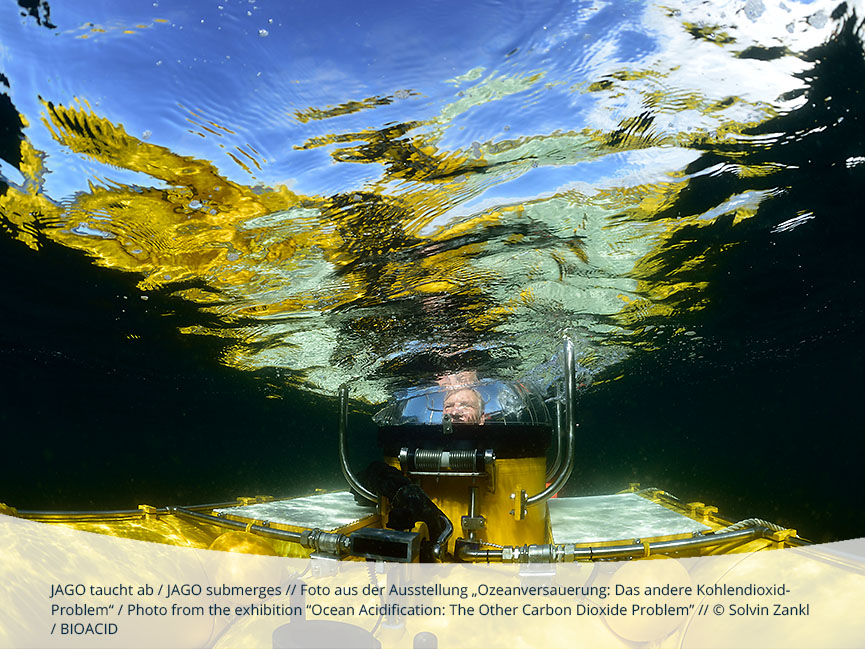
Research submersible JAGO
Germany’s only manned research submersible is based at GEOMAR since January 2006. But its history goes back much further: In 1988, the oceanographer Hans Fricke, the submersible pilot and technician Jürgen Schauer, biologist Karen Hissmann and the allrounder Lutz Kasang started constructing the underwater vehicle at the former Max Planck Institute for Behavioral Physiology in the Bavarian village Seewiesen. Their goal was to watch the legendary coelacanth in its natural environment.
JAGO’S first dive was celebrated on 17 August 1989 at Lake Starnberg. Soon after, the fresh water swimmer became a saltwater being: On November 2, 1989 JAGO explored the steep lava slopes at the island Grande Comore for the first time. Initially, the legendary “dinofish” did not show up. But the fourth attempt to meet it was successful: Even three coelacanths dwelled in a cave that reached 195 metres into the rock.
Since the impressive experience in the Comoros, JAGO has gone places. It has been in the South Pacific and in Iceland, the Black and the Red Sea, in Bavaria’s lakes and in the Kiel Fjord. In 1997, marine biologists explored cold-water coral reefs off the Norwegian coast with JAGO for the first time. Since then, the fragile reefs have become a second home to the submersible.
Characteristics JAGO:
Length: 3 metres
Width: 2 metres
Height: 2.5 metres
Weight in air: 3000 kilogrammes
Depth: 400 metres
Speed: 1 knot
Crew: 1 pilot, 1 observer
In this video portrait, Janina Büscher, marine biologist at GEOMAR, tells about her JAGO dives to cold-water corals reefs off Norway and her laboratory experiments that help her to better understand how climate change affects these animals.
More about JAGO on the GEOMAR website:
www.geomar.de/en/centre/central-facilities/tlz/jago/overview